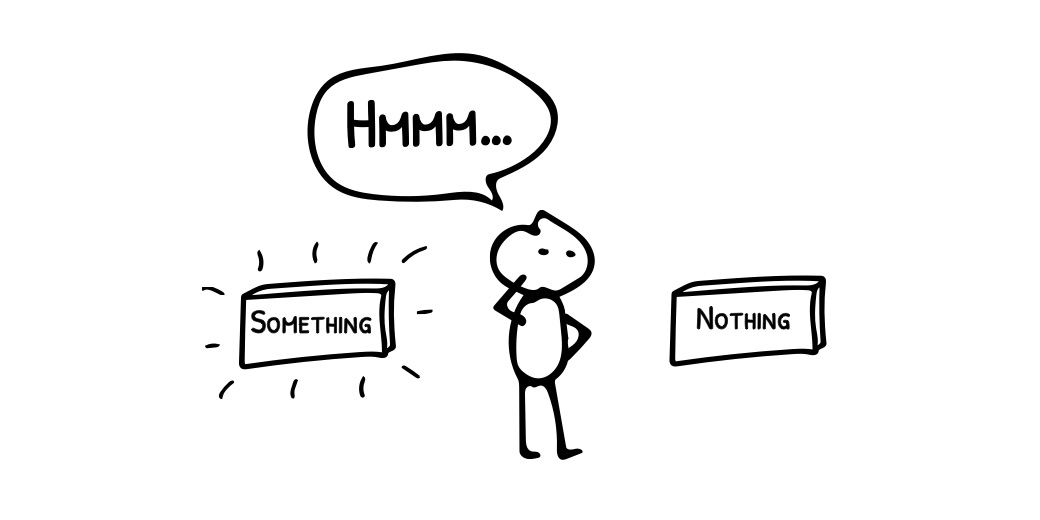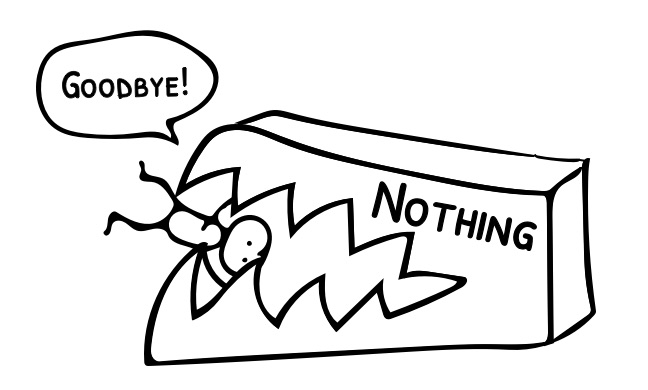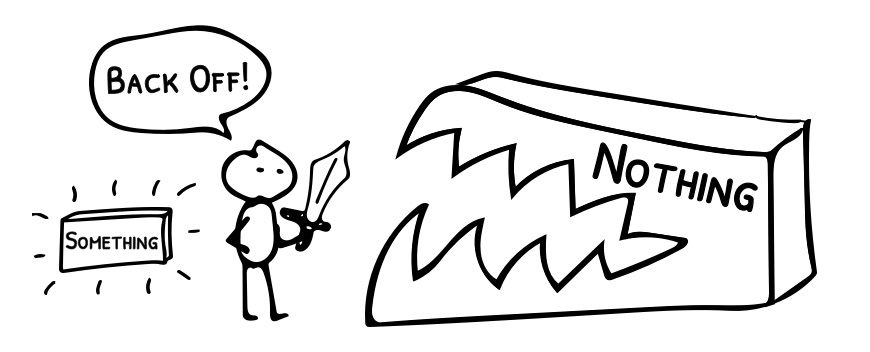
With all the different flavors of competition your business is up against, there’s a sneaky one that’s easy to overlook. No matter what industry you’re in, this competitor is always ready to lure away your potential customers.
“Do Nothing.”
“Do Nothing” has a very strong value proposition for your customers. It appears to be the cheapest, least risky, most accessible option available.
Your customers are already familiar with “Do Nothing”. The onboarding process of “Do Nothing” is incredibly smooth. They may have months or even years using it. It’s comfortable and safe.
Best of all, the core feature of “Do Nothing” is a perfect fit with something our brains crave to do: conserve energy.
Our brains like to make less demanding activities seem more appealing (See, opting to “improve your health” by sleeping in versus going to the gym).
And when it comes to decision making, our brains always prefer fast, intuitive judgements over slow, in-depth analysis. Even if your product makes perfect sense for your customers, “Do Nothing” always requires less thought.
“Do Nothing” takes all the pressure off. Instead of struggling with new thoughts, actions, and costs, customers get the safe, familiar status quo.

When “Do Nothing” Strikes!
I work as a strategy consultant, where “Do Nothing” is a constant threat.
Having worked with businesses from idea-stage to Fortune 500, a company can always benefit from a strong process and outside perspective.
But when you’re the one in need of outside strategy help, the siren song of “Do Nothing” is very tempting.
- “I’ve got this figured out already.”
- “What we’re doing is good enough.”
- “I can’t afford it right now.”
- “I should just handle it myself.”
These arguments allow folks to make quick intuitive judgements to continue on as-is.
This exact situation happened last year with a client who works as a real estate developer. He was looking for innovative ways to improve how he sold units in a large condominium complex.
We discussed all his pain points and came up with a clear plan to reduce costs and improve his process. The engagement would establish an approach he could replicate across all future development projects as well. The potential long term financial gains for his business were significant.
We agreed on a proposal, had it in writing, and were ready to go.
Then, within a day of getting the signature and kicking things off, he happened to sell a unit through his traditional channels.
He backed out.
“Do Nothing” now seemed much more appealing. The effort and cost of something new was too much, even with the potential of long term gains.
This is a key advantage for “Do Nothing”. Your business is selling an envisioned future, “Do Nothing” is in your customer’s hands today.
Are Customers Really “Doing Nothing”?
If you dig below the surface your customers are rarely, truly “doing nothing”. For the real estate developer, “Do Nothing” meant not getting outside strategic help. He didn’t choose another consultant, he opted for the status quo of existing processes.
But what was driving the desire to get help in the first place? His sales process was an activity he wanted to improve. But behind that was likely a greater emotional desire to feel confident that he was maximizing the potential of his business.
By selling a unit through existing methods, he got a boost on that emotional need. It was now much easier to say, “I guess my current direction is good enough for now”.
So, if you look at it from the emotional-benefit perspective you can see what was happening behind that “Do Nothing”.
No matter how innovative or valuable your offering is, customers can always find alternative ways to satisfy those emotional needs.

How to Battle “Do Nothing”
The value of thinking about “Do Nothing” is that it gives you a deeper view of what you’re providing to your customers. It can help you position your offering as favorably as possible. It also gives you a wider view of who your competition may be.
Here are some questions to consider in the battle against “Do Nothing”:
- How important is the need you’re fulfilling for your customers and how often do they experience pain around it? (The less important and infrequent the problem, the more easily “Do Nothing” will win out.)
- Is the value proposition of your offering instantly understandable? (If it’s not clear, “Do Nothing” will likely be more appealing.)
- What emotional benefits do your customers get with your offering?(What’s driving the desire to use your product or service?)
- Are you speaking to those benefits with your customers? (Is your messaging focused just on your offering’s features or does it speak to customer benefits?)
- How else might your customers be satisfying the deeper needs you’re addressing? (Are you properly considering competitors outside your immediate vertical?)
- How can you best differentiate your offering from those other solutions? (Do the features of your offering align with what your customers value most?)
The first step is to make sure you have good answers to those questions. Next, you’ll want those ideas reflected on your website and other marketing channels.
The more clearly you can address this line of thinking, the better you’ll fare with attracting customers away from the temptation of “Do Nothing”.
If you want help developing answers for those questions, you can download our free innovation worksheets below.


